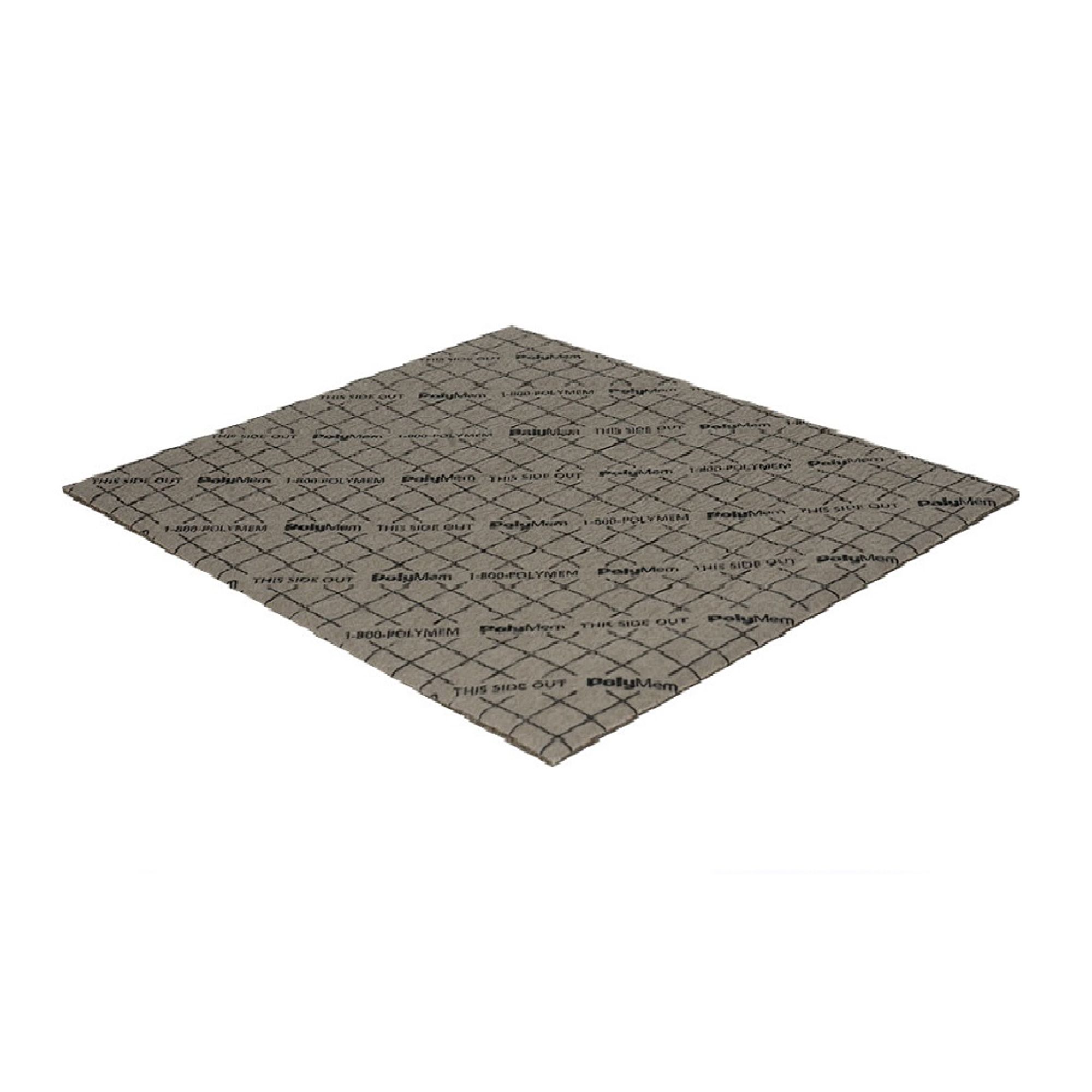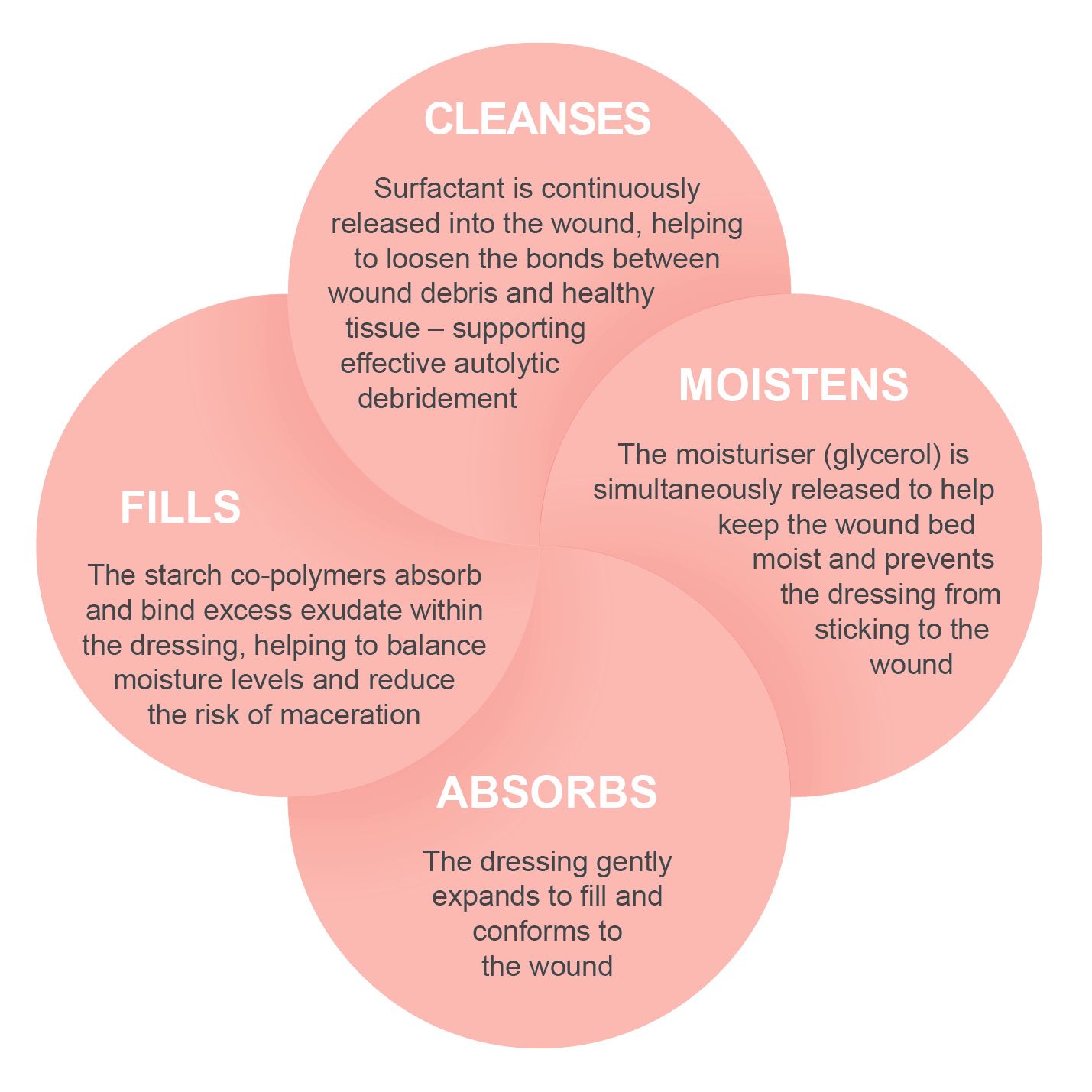PolyMem® Silver Non-Adhesive Dressings
A multifunctional polymeric membrane dressing with embedded silver for antimicrobial protection, designed without adhesive backing for use as a primary or combined dressing.
PolyMem® Silver Non-Adhesive dressings integrate the core PolyMem® functions — cleansing, filling, absorption, and moisture management — with the added benefit of silver’s antimicrobial action. The silver is embedded in the membrane and releases ions when moisture is present, helping reduce bioburden while minimising silver release into the wound bed.
Product Benefits
The ONLY dressing of its kind…
When PolyMem® Silver is applied to the wound, the dressing components work individually and synergistically to support wound healing and pain relief¹.
How the PolyMem® Silver formulation works:
High purity small silver particles are uniformly distributed throughout and bound into the PolyMem® formulated membrane for maximum surface area and effectiveness. Silver ions, which provide the antimicrobial action, are released from the surface of the silver particles when they come in contact with moisture.
All PolyMem dressings effectively cleanse, fill, absorb and moisten wounds throughout the healing continuum.
PolyMem Silver Non-Adhesive Dressings deliver the following benefits:
References
1. WoundSource. (2025). PolyMem® Silver Non-Adhesive Dressing – Product Overview. WoundSource Clinical Resource.
2. Benskin, L.L. (2016). Wound inflammation and the role of a multifunctional polymeric dressing. Ostomy Wound Management, 62(6): 42–50.
3. Ferris Manufacturing Corp. (2025). IFU-5942 PolyMem® Silver Pad or Roll Dressing – Instructions for Use. Ferris Manufacturing Corporation, Burr Ridge, IL, USA.
2. Benskin, L.L. (2016). Wound inflammation and the role of a multifunctional polymeric dressing. Ostomy Wound Management, 62(6): 42–50.
3. Ferris Manufacturing Corp. (2025). IFU-5942 PolyMem® Silver Pad or Roll Dressing – Instructions for Use. Ferris Manufacturing Corporation, Burr Ridge, IL, USA.
Indications
PolyMem® Silver Non-Adhesive Dressings may be used for partial- and full-thickness wounds, especially where infection risk or higher bioburden is present. Common clinical applications include:
Contraindications & Precautions
Applying PolyMem® Silver Non-Adhesive Dressings
1. Prepare the wound — cleanse and debride per local protocol; ensure the peri-wound skin is dry.
2. Select dressing size — choose a dressing with margins overlapping the wound (e.g. ~0.6–5 cm larger, where applicable) depending on manufacturer guidance.
3. Apply dressing — place the dressing directly over the wound, ensuring full contact with the wound bed.
4. Secure (if needed) — since this is non-adhesive, use appropriate secondary fixation (e.g. tape, net, gauze, bandage).
5. Outline wound — optionally, trace the wound margins on the top of the dressing to monitor changes and plan dressing changes.
6. Wear time & monitoring — the dressing may be left in place up to 7 days, depending on exudate levels and wound condition; change earlier if saturation is evident or as clinical judgment dictates.
7. Removal — gently lift from one edge and peel away. If adhesion is encountered, moisten with sterile saline to assist removal.
Note: It is not uncommon to observe increased wound fluid during the first days of use — this reflects the dressing’s fluid-attraction property and indicates it is functioning properly.
2. Select dressing size — choose a dressing with margins overlapping the wound (e.g. ~0.6–5 cm larger, where applicable) depending on manufacturer guidance.
3. Apply dressing — place the dressing directly over the wound, ensuring full contact with the wound bed.
4. Secure (if needed) — since this is non-adhesive, use appropriate secondary fixation (e.g. tape, net, gauze, bandage).
5. Outline wound — optionally, trace the wound margins on the top of the dressing to monitor changes and plan dressing changes.
6. Wear time & monitoring — the dressing may be left in place up to 7 days, depending on exudate levels and wound condition; change earlier if saturation is evident or as clinical judgment dictates.
7. Removal — gently lift from one edge and peel away. If adhesion is encountered, moisten with sterile saline to assist removal.
Note: It is not uncommon to observe increased wound fluid during the first days of use — this reflects the dressing’s fluid-attraction property and indicates it is functioning properly.
Ordering Details

